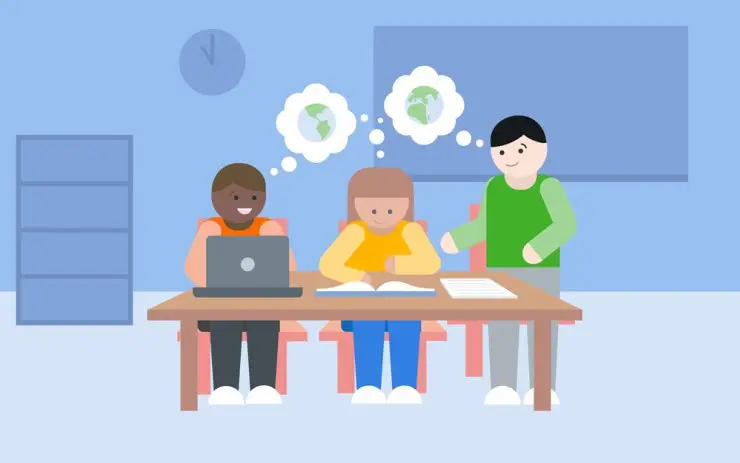The traditional educational system is tailored for masses. Students in 30+ classes perform the same assignments and use the same information channels. Their knowledge is assessed according to universal grading scales. This approach is cheap and easy to implement but unproductive. The thing is that each person has one’s own ideal learning style. For example, visual learners prefer watching films instead of reading textbooks. Auditory learners need more live communication, can record educators’ explanations, and listen to them at home.
Schools often overlook the individual peculiarities of their students. There is no opportunity to study in the way each person likes. As a result, some learners lag behind classmates. Professors say that these young people are not smart and talented enough thus lowering motivation and self-esteem, discouraging them from reaching academic heights. At the same time, some students work much faster than peers, sit with their arms folded at the end of a lesson, feel boredom, and lose learning enthusiasm. Therefore, mass schooling sometimes brings more harm than benefits.
Bearing in mind these problems, advanced educators popularize personalized learning. In this article, experts from Pro-Papers have outlined the definition and the main features of this educational system.
What personalized learning is?
Imagine a classroom where all students work at their own pace. There is no obligatory route that everyone should stick to, no universal way to obtain knowledge. The only common thing is a diploma issued at the end of an academic journey. Learners should reach the basic level of proficiency in core disciplines, show understanding of the main concepts and readiness to apply them in practice.
At the same time, professors compile customized learning strategies, encourage students’ initiative, and take into account their opinion when planning educational activities. Even though all learners should come to the same point and show good results on exams, everyone is free to decide what, when, and how one would do to reach this goal.
This model is opposite to a classic teacher-centered system. Professors are rather facilitators and supporters than commanders and strict observers. They help young people to set short-term and long-term goals taking into account a current knowledge level and skills, natural talents, inclinations, strengths, and weaknesses.
Students become more responsible and self-sufficient, learn to direct their academic activities, and approach education with enthusiasm. Classes cease to be a tedious duty and turn into a deliberate choice, a personal aspiration, and an exciting adventure. If a person is allowed to take part in academic planning and choose the most suitable educational format, one is more likely to know what one wants from life and how to reach it. Such a mindset is valued by employers who strive to hire self-motivated specialists not requiring constant control, working hard to bring a company to new victories, and not due to the fear of punishment.
Educators should make sure customized curricula comply with general educational standards and students get sufficient knowledge to enroll in a college or enter the labor market. If applied reasonably, personalized learning strategies can help all students reach their full potential, in particular, persons with disabilities who find it challenging to keep up with healthy classmates.
How does personalized learning work?
Since this educational format is rather young, there is no universal formula that would suit all schools. However, there are some widely used patterns. Each of them is a balanced combination of students’ freedom and compliance with rigorous academic standards.
Keeping students’ profiles
Educators create a personal record for each learner, reflect one’s motivations, strengths, weaknesses, accomplishments, and failures there, track changes over different periods of time, determine whether a person copes well with goals set, and seek ways to improve one’s performance. Such profiles should be regularly updated to get a comprehensive picture of the student’s progress.
Personalized learning paths
Each student may have a customized learning schedule. As a rule, professors use several methods and combine them in different proportions depending on the person’s needs.
Practical lessons are usually obligatory for everyone and held on campus, while lectures may be provided as videos, reviewed whenever a person needs, stopped if one wants to take notes or comprehend some challenging concepts. Also, extracurricular classes for small groups and individual students are necessary. Young people attend them to fill in knowledge gaps and hone specific skills.
Several learners can attend different lessons and allocate different amounts of time to study the same topic. But the result is unchangeable: all they should know this topic well.
Competency-based progression
Students work with real-life cases to understand which competencies should be improved to solve problems typical for their future profession, strive to become good specialists and not to pass an exam. Such practical activity gives young people a clear idea of what all academic responsibilities are needed.








Leave a Reply
You must be logged in to post a comment.